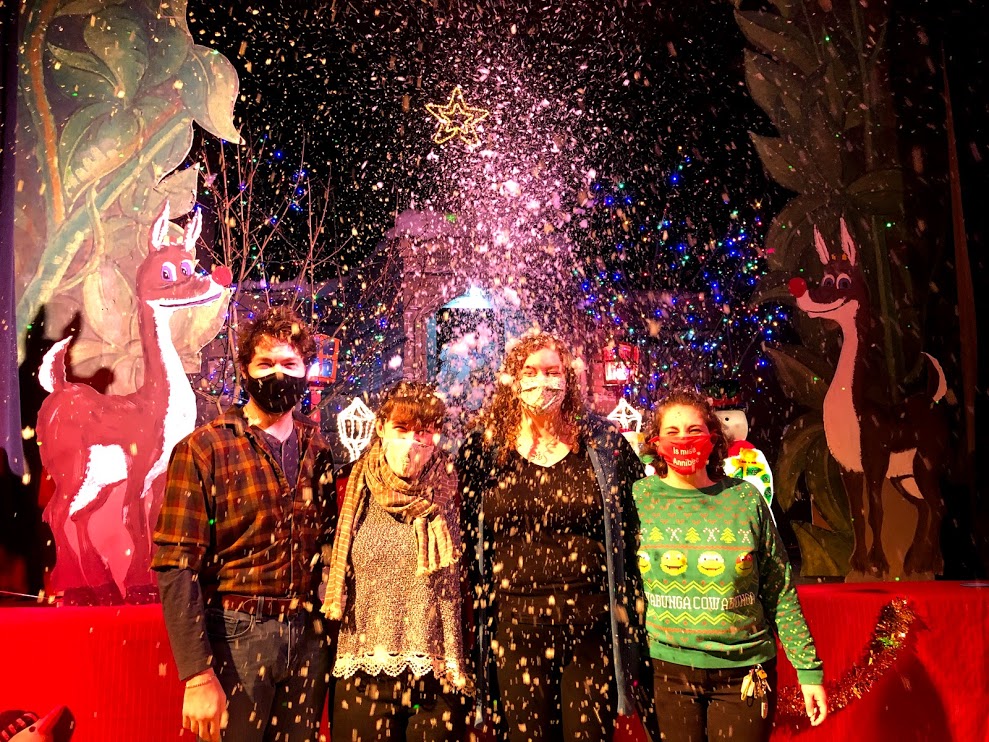For as long as I can remember, I have been in love with language and linguistics. My childhood love of codes and wordplay turned into a fascination with French and translation in high school and college, and now is finding its home in a casual dabbling in the Irish language. I love the way language captures something about our essence as people and cultures, how it can transform from a practical means of communication to an art form.
There’s something mysterious about how languages live; not only do they crystalize a culture into words and phrases, they also adapt with astounding speed. Our household community, only living together for a few months, already has a vocabulary of our own; a clever idea is referred to as “12-brain energy,” the fire starter is either “flamethrower” or “ffffsh” depending on the mood and tiredness of the speaker, “zucchini” can refer to either the vegetable or a form of currency (that one takes too long to explain in a single blog post.)
One of the running jokes in our house has involved my goofy attempt to translate the songs we’re singing into French during our rehearsals. It rarely works, since the rhythms of the languages are so different, and often ends in my singing multiple words on the same tone or rushing through them to make them fit. But this bilingual rehearsal joke, while mostly just intended to make my housemates laugh, contains something of my internal dialogue, capturing where my mind goes when it’s feeling playful.
Fr. Denis, familiar with my curiosity about the Irish language, recently gave our household a book called Thirty-Two Words for Field, by Manchán Magan, and I have not been able to put it down. One of my favorite chapters is one in which the author discusses the way the Irish language connects this world and the world beyond, how the ancient beliefs wove their way into the language itself. “The adjective comhalta, related to the word púicín, means ‘covered’ or ‘hooded’ but can also refer to the act of being invisible beneath magic robes, as in comhalta faoi bhrat sí, (‘hidden by a fairy mantle)” (33). This cumulative nature of the language is one the author discusses in depth: how the ancient origins of the Irish language are perceptible beneath the modern usage. This is a phenomenon we have experienced in another genre as well – it turns out that many familiar church hymns from the States are actually written over Irish rebel airs, and therefore should not be sung in Mass if one wants the congregation to focus on the Sacrament and not the 1798 Rising. (We got awfully close to accidentally singing a “particularly bloodthirsty” tune recently, as Fr. Denis warned us. What we thought was a lovely Marian hymn was, in fact, not, in Irish folk memory.)
This accumulation of meaning, the writing-over and folding-in of vocabulary, is such a vivid demonstration of the effect of tradition on our daily lives. As we enter a season rich in tradition and simultaneously so markedly different from previous years, I am reminded of the beauty of the living Catholic tradition. This Christmas contains every Christmas before it, as each Mass is celebrated with the memory of every Mass ever said. The temporal and the eternal meet in these moments; the communion of saints celebrates with us, we are united to the entire community on earth and in heaven through the mystery of the altar.
The same way we are touched and changed by every person we love, the way we adopt the language and pet peeves and habits of those we have lived with, the way we carry the memory of both love and loss in our very bodies, we are held in a community that overcomes distance. So, as we head into a Christmas of perceived separation, I will be remembering the way my laugh comes from my mom, my love of liturgy from my dad, my fascination with legend from my brother Paddy, my sense of justice from my brother Jack, my love of goofing off from my brother Liam, my tenderness from my sister Maeve. I’ll think about the podcasts I love because people I love showed them to me, the songs sent to me by a college boyfriend, the love of social work, musicianship, writing, and psychology instilled in me by friends who studied those things. This year, “home for Christmas” will look very different, so I will be thinking about how I carry home around with me always.

